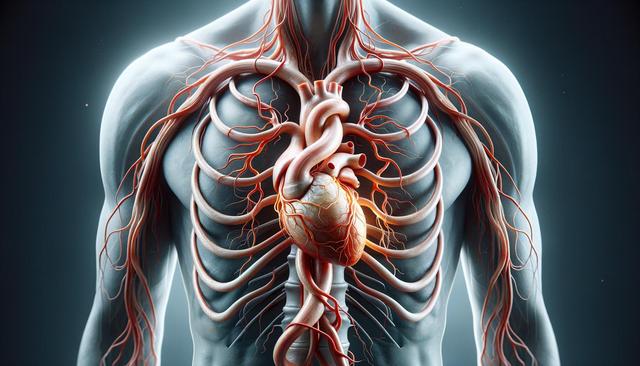What Causes a Thoracic Aortic Aneurysm?
A thoracic aortic aneurysm occurs when a portion of the aorta, the main artery leading from the heart, weakens and enlarges within the chest cavity. Understanding what causes a thoracic aortic aneurysm is essential for early detection and prevention. Several factors contribute to the development of this condition, including:
- Genetic disorders such as Marfan syndrome or Ehlers-Danlos syndrome
- High blood pressure over prolonged periods
- Atherosclerosis, or the hardening of the arteries
- Trauma to the chest area
- Infections affecting the aorta
In some cases, thoracic aortic aneurysms are congenital, meaning individuals are born with a predisposition to this condition. As the aorta weakens, it becomes more susceptible to expansion and rupture, making early identification critical for safe management.
Symptoms and Risks of Aortic Enlargement in the Chest
Recognizing the symptoms and risks of aortic enlargement in the chest can be challenging because thoracic aneurysms often develop silently. Many individuals do not experience noticeable symptoms until the aneurysm is large or complications arise. Common symptoms may include:
- Chest or back pain
- Shortness of breath
- Difficulty swallowing or hoarseness
- Persistent cough
The risks associated with an untreated thoracic aortic aneurysm can be life-threatening. They include the potential for rupture, leading to internal bleeding, and dissection, where the layers of the aorta tear. Both complications require immediate medical attention and often surgical intervention to prevent fatal outcomes.
How Thoracic Aneurysms Are Diagnosed and Monitored
Early and accurate diagnosis is crucial in managing thoracic aortic aneurysms. Knowing how thoracic aneurysms are diagnosed and monitored can help individuals seek appropriate care. Physicians typically utilize advanced cardiovascular imaging services to assess the condition of the aorta. These imaging techniques may include:
- Chest X-rays
- Computed tomography (CT) scans
- Magnetic resonance imaging (MRI)
- Echocardiography
Once diagnosed, regular monitoring is vital. Specialists often recommend periodic imaging tests to track the aneurysm’s growth and assess any changes. Monitoring frequency depends on the aneurysm’s size and the patient’s overall health, helping to determine the appropriate timing for surgical intervention if necessary.
Specialized Aortic Care Centers and Their Role
Receiving treatment at specialized aortic care centers greatly enhances patient outcomes. These centers bring together multidisciplinary teams that focus solely on aortic diseases, offering patients access to the latest technologies and research. The benefits of seeking care at these specialized facilities include:
- Comprehensive treatment plans tailored to individual needs
- Access to experienced cardiovascular surgeons and specialists
- Advanced imaging and diagnostic tools
- Collaborative care involving cardiologists, geneticists, and other experts
Specialized aortic care centers also provide essential support services, including genetic counseling and patient education, empowering individuals to make informed decisions about their health management strategies.
Surgical Options for Aneurysm Repair
When a thoracic aortic aneurysm reaches a size where the risk of rupture becomes significant, surgical intervention is often recommended. Understanding the surgical options for aneurysm repair helps patients prepare for the road ahead. Common surgical approaches include:
- Open chest surgery to replace the weakened section of the aorta with a synthetic graft
- Endovascular aneurysm repair (TEVAR), a less invasive procedure using a stent graft inserted through a blood vessel
The choice between open surgery and endovascular repair depends on several factors, including the aneurysm’s location, size, patient’s age, and overall health status. Both methods aim to reinforce the aorta and prevent catastrophic events. Recovery times and risks associated with each procedure vary, and thorough discussions with healthcare providers help clarify the most appropriate course of action.
Conclusion
Thoracic aortic aneurysms are serious conditions that demand careful attention and specialized care. Understanding what causes a thoracic aortic aneurysm, recognizing the symptoms and risks of aortic enlargement in the chest, and knowing how thoracic aneurysms are diagnosed and monitored are crucial steps in managing the disease. Access to advanced cardiovascular imaging services and treatment at specialized aortic care centers ensures patients receive the comprehensive care they need. When necessary, surgical options for aneurysm repair provide effective solutions to prevent life-threatening complications. Staying informed and proactive can make a significant difference in outcomes for those affected by thoracic aortic aneurysms.




Leave a Reply